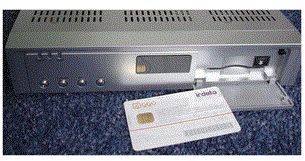*Situation *
Channels have to be (re) installed at the following situations:
• At first installation of the TV
• When one or more channels are missing
• When switching to a different provider or signal type
How to (re) install channels? [DVB-T-C]
Checklist
Ensure that:
• All cables are firmly connected
• The TV is certified for the provider
Answer
Verify which signal type delivers the TV channels (via the signal provider) and proceed with the applicable steps for that signal:
From antenna signal (DVB-T)
Ensure to:
• Double-check if the antenna cable is firmly connected to the television
• If applicable, leave out the (CI+) CAM module while installing the channels
Answer:
To re-install DVB-T channels press “Home” on the remote control of your television and select:
• [Setup] > [Channel installation] > [Reinstall all channels] > [Your country] > [Antenna DVB-T] > [Settings] > [Frequency scan] > [Full scan]
• Choose [Done] from the menu or by pressing the green button on the remote
• Select [Start]
• Follow the on-screen instructions
If applicable, place the CI+ CAM module back into the television after installing the channels.
Directly from cable (DVB-C)
Checklist
Ensure to:
• Double-check if the cable is firmly connected to the television
• If applicable, leave out the (CI+)CAM module while installing the channels.
To re-install DVB-C channels press “Home” on the remote control of the television and select:
• [Setup] > [Channel installation] > [Reinstall all channels] > [Your country] > [Cable DVB-C ] > [Settings] > [Frequency scan] > [Full scan]
• Choose [Done] from the menu or by pressing the green button on the remote
• Select [Start]
• Follow the on-screen instructions
If applicable, place the CI+ CAM module back into the television after installation
Note for consumers in the United Kingdom:
• In the UK televisions are almost always sold for DVB-T tuner use.
• DVB-C channel support in the UK is only available via a Virgin Media subscription and a set-top box
• The DVB-C tuner built into the TV is not certified for the UK cable providers. Therefore we have no setup details for the DVB-C signal in the UK and we can not guarantee DVB-C channels working correctly when installed directly on our sets.
What to do when no channels or only analogue channels can be found
If no channels or only analogue channels can be found, follow these steps:
1. Check the Signal strength and quality
Press the “Options” button on the remote control of the TV and select [Status]
• For receiving digital channels, the signal strength should be above 80%
2. Check the Network frequency and network ID
In some cases the television will ask for the following data: [Network frequency] > [Network ID]. Please refer to the service provider for more information on this.
The cable provider “Unity Media” in Nordrhein-Westfalen uses the network ID 43235
outside of Nordrhein-Westfalen, the network ID 09999.
3. Set [Digital channel] to [On]
This option can be found in the menu [Channel settings] or when selecting [Settings] instead of [Start] during the channel installation
4. Change the frequency step size
Select [Settings] instead of [Start] during the channel installation and choose [Frequency step size]. Change the setting to 1MHz for a slower and more accurate channel scan.
5. Reset the tuner
Follow these steps to reset the tuner:
• Unplug all cables from the TV except for the power cable
• Walk through the channel installation without cable and cam module inserted into the TV
• Switch the TV off and plug the antenna cable back in again
• Repeat the channel installation with the cable inserted
Via a set-top box
Ensure that:
• All cables are firmly connected
• The correct source on the television is selected with the “Source” button
Contact the Service Provider with instructions on how to further install the set-top box.



